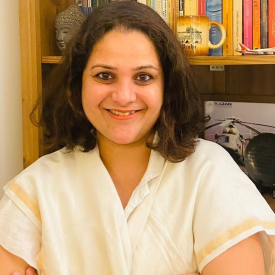Enhancing secondary school learning: Role of remedial camps and teacher flexibility
A key dilemma in Indian education is that while children are enrolled in school, they are not actually learning. Based on an experiment in Odisha, this article explores possible solutions to the learn...
-
 Sabrin Beg
Sabrin Beg  Anne Fitzpatrick
Anne Fitzpatrick  Jason Kerwin
Jason Kerwin  Adrienne Lucas
Adrienne Lucas  Khandker Wahedur Rahman
Khandker Wahedur Rahman  08 April, 2024
08 April, 2024
- Articles
Second Ashok Kotwal Memorial Lecture: Inequality, Labour and Social Democracy
The Ashok Kotwal Memorial Lecture was instituted in 2022, in memory of our founding Editor-in-Chief, as an annual lecture on key issues of development. For its second edition, I4I hosted Professor Pra...
-
 Pranab Bardhan
Pranab Bardhan  I4I Team
I4I Team  20 December, 2023
20 December, 2023
- Videos
Economic development, the nutrition trap, and metabolic disease
Two recently documented facts run counter to the conventional wisdom that economic development leads to better health: the absence of a clear link between income and nutritional status in developing c...
-
 Nancy Luke
Nancy Luke  Kaivan Munshi
Kaivan Munshi  Anu Mary Oommen
Anu Mary Oommen  Swapnil Singh
Swapnil Singh  10 January, 2022
10 January, 2022
- Articles
Role of ICT in Improving the Quality of Elementary School Education in Bihar
The objective of this project was to bring out the role of ICT in improving the quality of school education, integrated within pedagogical approaches taking on-board the social constraints of schoolin...
-
 Chirashree Das Gupta
Chirashree Das Gupta  Haridas KPN
Haridas KPN  01 August, 2011
01 August, 2011
- IGC Research on India
Improving Access to and Measuring the Impact of Public Health Insurance in India
This project aims to add to the broad literature on improving the quality of public services by looking at the effect of providing incentives to agents for spreading information regarding a government...
-
 Erlend Berg
Erlend Berg  Maitreesh Ghatak
Maitreesh Ghatak  D Rajasekhar
D Rajasekhar  Sanchari Roy
Sanchari Roy  01 April, 2011
01 April, 2011
- IGC Research on India
Improving Access to and Measuring the Impact of Public Health Insurance in India
This project aims to add to the broad literature on improving the quality of public services by looking at the effect of providing incentives to agents for spreading information regarding a government...
-
 Erlend Berg
Erlend Berg  Maitreesh Ghatak
Maitreesh Ghatak  D Rajasekhar
D Rajasekhar  Sanchari Roy
Sanchari Roy  01 April, 2011
01 April, 2011
- IGC Research on India
Information Provision and the Quality of Education in Rural India
This study analyses whether providing information on the absolute and relative quality of schooling to the stakeholders affects the behaviour of service providers in both the public and the private se...
-
 Farzana Afridi
Farzana Afridi  Bidisha Barooah
Bidisha Barooah  Rohini Somanathan
Rohini Somanathan  01 April, 2011
01 April, 2011
- IGC Research on India
Twitter feed
Tweets by Ideas4IndiaMost Popular Human Development Posts
Hindu-Muslim fertility differentials in India: District-level estimates from Census 2011
The 2011 Indian Census data show a higher growth rate of Muslim population compared to the Hindu population. This article provides an in-depth picture of Hindu-Muslim fertility differentials at the di...
 Saswata Ghosh
Saswata Ghosh  27 March, 2019
27 March, 2019
- Articles
Ten steps to transform the quality of education in India
In this article, Sridhar Rajagopalan, Managing Director of Educational Initiatives, suggests 10 initiatives that can help transform the quality of education in India.
 Sridhar Rajagopalan
Sridhar Rajagopalan  19 November, 2015
19 November, 2015
- Perspectives
Understanding India’s mental health crisis
Since the onset of the Covid-19 pandemic, several reports have indicated a worsening of mental health issues among individuals across age groups. In this post, Michele Mary Bernadine examines the stat...
 Michele Mary Bernadine
Michele Mary Bernadine  06 April, 2021
06 April, 2021
- Perspectives





 24 April, 2024
24 April, 2024






